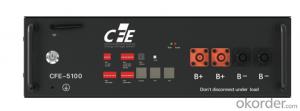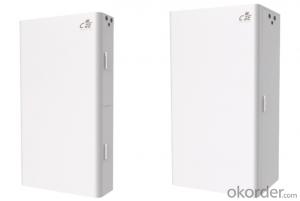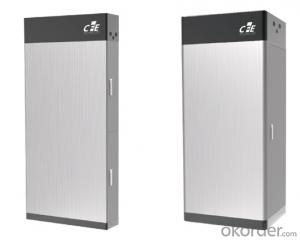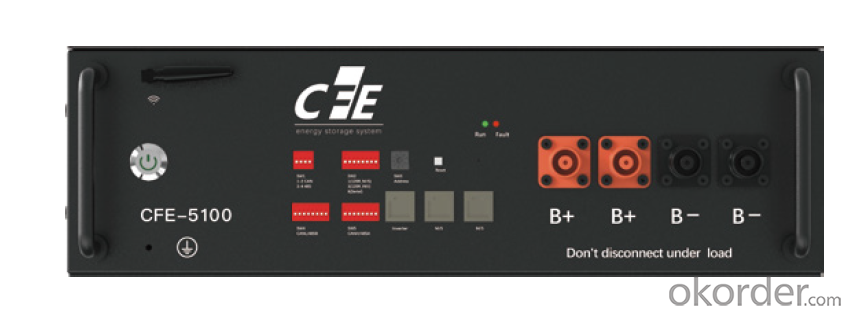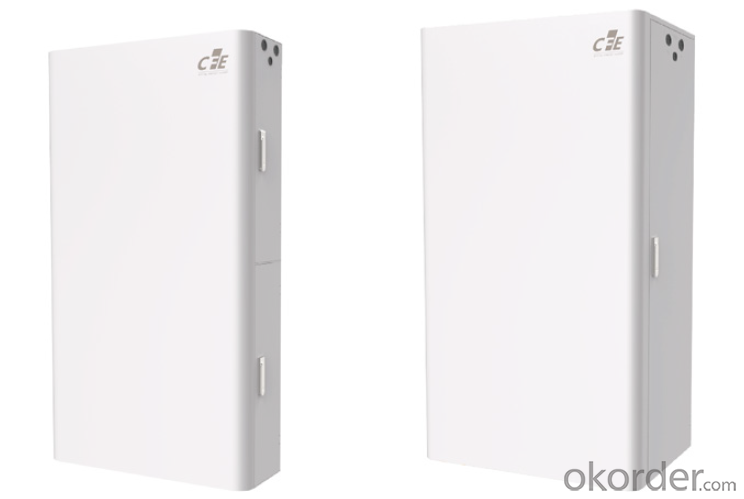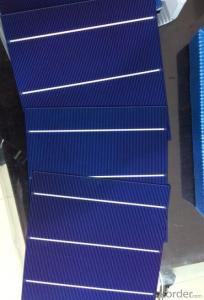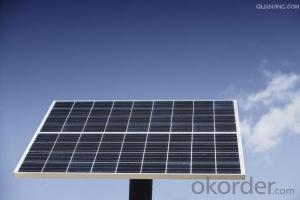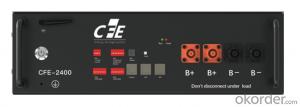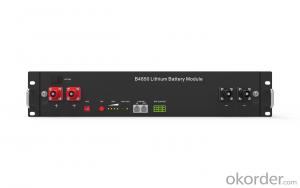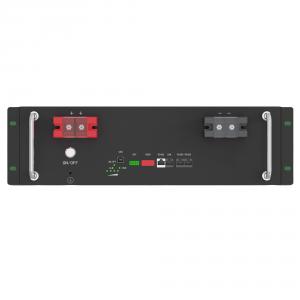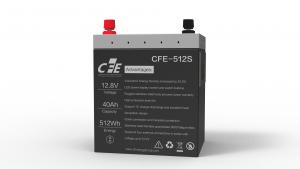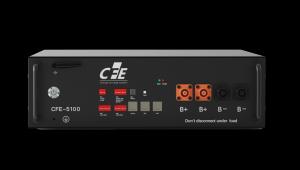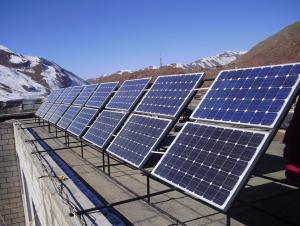Ztj Solar Cells CNBM-ESS Lithium Storage Battery 5.12kWH
- Loading Port:
- China main port
- Payment Terms:
- TT OR LC
- Min Order Qty:
- 10 set
- Supply Capability:
- 10000000 set/month
OKorder Service Pledge
OKorder Financial Service
You Might Also Like
Specification
CFE is committed to the R&D and production of
Residential ESS, actively respond to customer needs,
and provide customers with professional, skill leading
system integration and service solutions through
technological innovation and industry chain resource
integration. CFE Residential ESS can be combined with
photovoltaic and other power generation systems to
improve power supply quality and provide power
supply guarantee for users all day; through valley time
charging and peak time discharge, it can reduce
household power consumption expenses of users, and
at the same time, it can obtain economic benefits by
selling power to the grid.

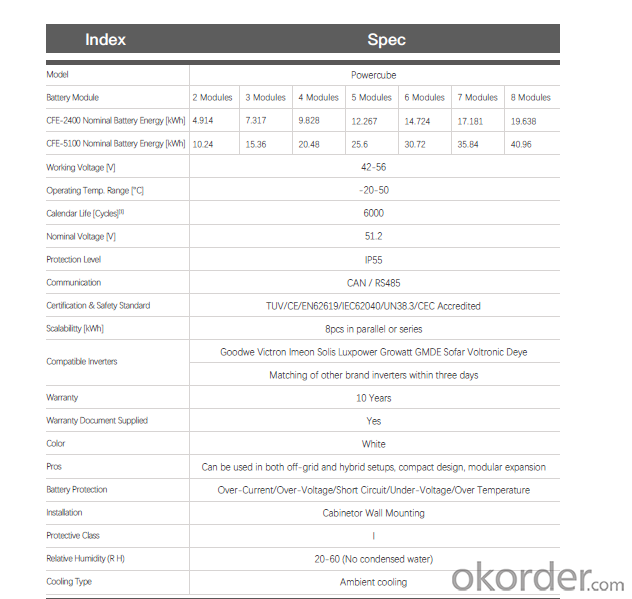
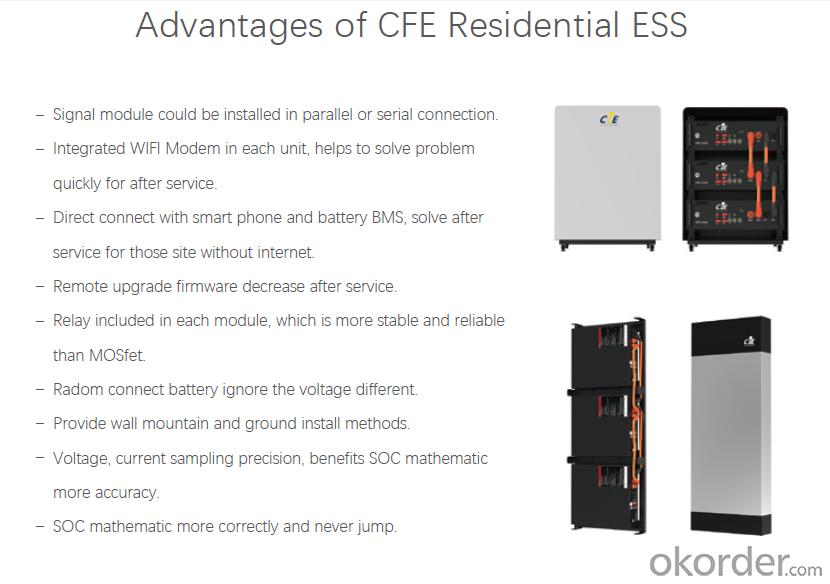
- Q: What is the maximum efficiency achievable by a solar cell?
- The maximum efficiency achievable by a solar cell is determined by the Shockley-Queisser limit, which states that the theoretical maximum efficiency is around 33.7% for a single-junction solar cell. However, in reality, due to factors such as material limitations and losses in the conversion process, the practical maximum efficiency of commercial solar cells currently ranges between 15% to 22%.
- Q: Can solar cells be used to power remote monitoring systems?
- Yes, solar cells can be used to power remote monitoring systems. Solar cells convert sunlight into electrical energy, which can be stored in batteries or directly used to power monitoring devices. This makes solar cells a reliable and sustainable solution for remote monitoring systems that require continuous power in areas where grid electricity may not be available or practical.
- Q: Can solar cells be used in mobile devices?
- Yes, solar cells can be used in mobile devices. In fact, there are already several mobile devices available in the market that are equipped with solar panels to harness solar energy and charge their batteries. These solar-powered mobile devices are particularly useful in situations where access to electricity is limited or unavailable.
- Q: What is the impact of solar cells on wildlife?
- Solar cells have a minimal impact on wildlife as they do not produce any direct pollution or emissions that could harm animals. However, the installation of solar farms can disrupt natural habitats and affect local wildlife by altering the landscape and reducing available space for vegetation and animal species. Implementing proper planning and wildlife-friendly measures during the construction and operation of solar farms can help mitigate these potential impacts and create a more harmonious coexistence with wildlife.
- Q: Can solar cells be installed on any type of roof?
- Yes, solar cells can be installed on almost any type of roof, including flat roofs, sloped roofs, metal roofs, tile roofs, and even asphalt shingle roofs. However, the specific installation process may vary depending on the type of roof and its structural integrity. It is always recommended to consult with a professional solar installer to assess the feasibility of installation on a particular roof type.
- Q: How are solar cells different from solar panels?
- Solar cells are the individual units that convert sunlight directly into electricity, while solar panels are a collection of these cells that work together to generate a larger amount of power.
- Q: What are the disadvantages of using solar cells?
- Some disadvantages of using solar cells include high initial costs, intermittent energy production due to weather conditions, the need for large areas of land for installation, and the production of toxic materials during manufacturing. Additionally, solar cells have lower efficiency compared to traditional energy sources and may require additional energy storage systems for uninterrupted power supply.
- Q: How do solar cells perform in areas with high humidity and saltwater exposure?
- Solar cells can still perform well in areas with high humidity and saltwater exposure, although their efficiency may be slightly reduced. The moisture in the air and the saltwater can create a thin layer of corrosion on the surface of the solar cells, which can hinder their performance over time. However, advancements in solar cell technology, such as improved coatings and materials, have made them more resilient to these conditions. Regular cleaning and maintenance can also help mitigate the effects of humidity and saltwater exposure on solar cell performance.
- Q: How many types of solar cells are now being used in real life?
- Many many types.
- Q: Can solar cells be used to power remote oil and gas monitoring systems?
- Yes, solar cells can be used to power remote oil and gas monitoring systems. Solar cells convert sunlight into electrical energy, which can be stored in batteries or used directly to power monitoring systems. This renewable energy source provides a reliable and sustainable solution for remote locations where traditional power infrastructure may be unavailable or costly to install.
Send your message to us
Ztj Solar Cells CNBM-ESS Lithium Storage Battery 5.12kWH
- Loading Port:
- China main port
- Payment Terms:
- TT OR LC
- Min Order Qty:
- 10 set
- Supply Capability:
- 10000000 set/month
OKorder Service Pledge
OKorder Financial Service
Similar products
Hot products
Hot Searches
Related keywords
